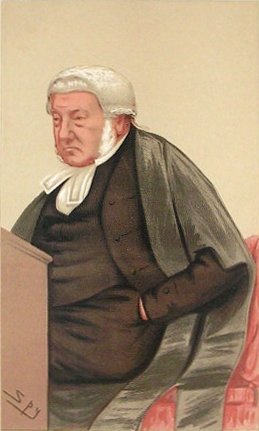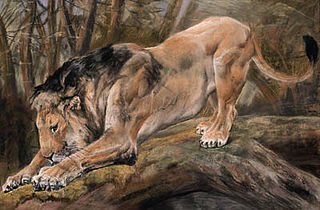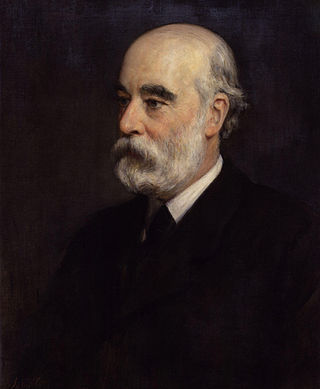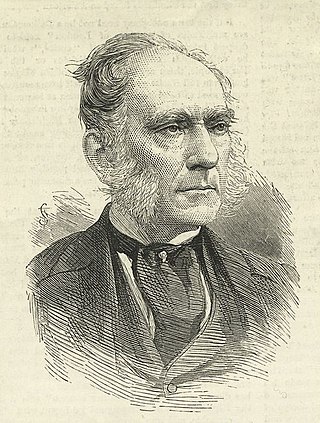George Barnett Smith (17 May 1841 – 2 January 1909) was an English author and journalist.
Contents

George Barnett Smith (17 May 1841 – 2 January 1909) was an English author and journalist.

Born at Ovenden, Yorkshire, on 17 May 1841, George Barnett Smith was the son of Titus and Mary Smith. He was educated at the British Lancastrian school in Halifax, then travelled to London where he worked as a journalist. [1]
From 1865 to 1868 Smith was on the editorial staff of The Globe , and from 1868 to 1876 on that of The Echo. He was subsequently a contributor to The Times . With literary tastes and poetical ambition, Smith managed to become a contributor to the major magazines, among them the Edinburgh Review , the Fortnightly Review , and the Cornhill Magazine . [1]
In 1889 lung trouble forced Smith to leave London for Bournemouth, and for the rest of his life he was an invalid. A Conservative government granted him a civil list pension in 1891, and a Liberal government increased it in 1906. Writing to the last, he died at Bournemouth on 2 January 1909, and was buried in the cemetery there. [1]
Smith made a reputation as author with a series of biographies, the first of which dealt with Percy Bysshe Shelley (1877). A strong liberal in politics, he was more successful in his Life of W. E. Gladstone (1879; 14th edit. 1898), and in his Life and Speeches of John Bright (1881). There followed popular lives of Victor Hugo (1885), Queen Victoria (1886; new edit. 1901), and the German Emperor William I (1887). His most ambitious publication, History of the English Parliament (2 vols. 1892), occupied him five years. Among his other works were: [1]
Smith published under the pseudonym of Guy Roslyn three volumes of verse and George Eliot in Derbyshire (1876). He was a contributor to the early volumes of the Dictionary of National Biography , and his article on Elizabeth Barrett Browning in the ninth edition of the Encyclopædia Britannica (1876) earned him the friendship of Robert Browning. Some of Smith's work were included in English Etchings (1884–87). [1]
Smith was twice married: (1) to Annie Hodson (died 1868); (2) in 1871, to Julia Timmis, who survived him. He had four daughters, of whom two survived him. [1]
Attribution
![]() This article incorporates text from a publication now in the public domain : Lee, Sidney, ed. (1912). "Smith, George Barnett". Dictionary of National Biography (2nd supplement). Vol. 3. London: Smith, Elder & Co.
This article incorporates text from a publication now in the public domain : Lee, Sidney, ed. (1912). "Smith, George Barnett". Dictionary of National Biography (2nd supplement). Vol. 3. London: Smith, Elder & Co.
Alexander Balloch Grosart was a Scottish clergyman and literary editor. He is chiefly remembered for reprinting much rare Elizabethan literature, a work which he undertook because of his interest in Puritan theology.

George Birkbeck Norman Hill was an English editor and author.

George William Wilshere Bramwell, 1st Baron Bramwell,, was an English judge.

John Trivett Nettleship was a British artist, known as a painter of animals and in particular lions. He was also an author and book illustrator.

George Murray Smith was a British publisher. He was the son of George Smith (1789–1846), who, with Alexander Elder (1790–1876), started the Victorian publishing firm of Smith, Elder & Co. in 1816. His brainchild, The Cornhill Magazine, was the premier fiction-carrying magazine of the 19th century.

George Manville Fenn was a prolific English novelist, journalist, editor and educationalist. Many of his novels were written with young adults in mind. His final book was his biography of a fellow writer for juveniles, George Alfred Henty.

Richard Saul Ferguson was an English antiquary, specialising in the local history of Cumberland and Westmorland.
The Imperial Dictionary of Universal Biography was a biographical dictionary of the nineteenth century, published by William Mackenzie in Glasgow.
John Christopher Atkinson was an English author, antiquary, and priest.

John Eglington Bailey (1840–1888) was an English antiquary, Secretary of the Chetham Society and Fellow of the Society of Antiquaries.

William Latham Bevan was a Welsh churchman, archdeacon of Brecon from 1875.

John Parsons Earwaker (1847–1895) was an English antiquary.

Sir James Risdon Bennett was an English physician.
Arthur Palmer (1841–1897) was a Canadian-Irish classical scholar.
Thomas Henry Baylis (1817–1908) was an English barrister, judge, and legal author.
Charles William Boase (1828–1895) was an English academic, antiquarian and librarian.
John Cordy Jeaffreson was an English novelist and writer of popular non-fiction. He also spent periods teaching and as an inspector of historical documents.
Lewis Sergeant (1841–1902) was an English journalist and author.
William Chaffers was an English antiquary and writer of reference works on hallmarks, and marks on ceramics. His Marks and Monograms on Pottery and Porcelain, first published in 1863, has appeared in many later editions.